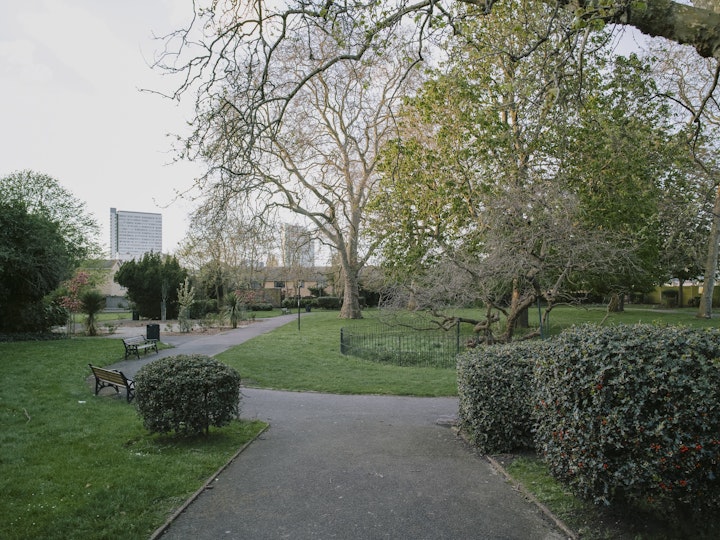It might seem strange to be holding an exhibition about hedges in the heart of urban Deptford. But not only is there a multitude of hedges and ornamental shrubs to be found in gardens, parks and other outdoor spaces, but Deptford has a rich hedge heritage.
‘…By water down to Deptford… and so away to Mr. Evelyn’s… and here he showed me his gardens, which are for variety of evergreens, and hedge of holly, the finest things I ever saw in my life. Thence in his coach to Greenwich… all the way having fine discourse of trees and the nature of vegetables.’
The Diary of Samuel Pepys, 05 October 1665
While being best known as a diarist, one of John Evelyn’s (1620–1706) principal legacies is in horticulture. His published works include an unfinished gardening history encyclopaedia the Elysium Britannicum (1650) and 1664’s Sylva, a tome about tree cultivation. This was the first book to be published by the Royal Society, of which Evelyn was a founding member. It provided practical guidance on propagating trees plus invaluable information about different species.
After spending a decade in Europe to escape the Civil War, Evelyn returned in 1652 to reside at his wife’s ancestral home in Deptford. Here he embarked on improving and extending the gardens, ‘planting trees and hedges on a massive scale,’ according to historian Prudence Leith-Ross. Features included a 160m ‘long walk’ bordered by hedges of codlin and pearmain apple trees and further hedges of berberis (barberry) and lilac. There were gardens for flowers and herbs, a lake complete with island, orchards and a wooded grove of 500 trees.
Sayes Court provided a living laboratory, a place where Evelyn could test his ideas about horticulture. The grounds were located next to Deptford’s Naval Dockyard, providing a source for exotic seeds from overseas. Over time, the gardens evolved from their initial Baroque formality into a more naturalistic style. In 1683, Evelyn replanted the garden’s long walks and outer boundaries with holly hedges, which became his pride and joy (‘the boast of my villa’).
In 1694, he moved back to his family home in Wotton, Surrey and leased out Sayes Court. Four years later, Sayes Court was sublet to Peter the Great while he studied shipbuilding at the Dockyard. It was bad news for Evelyn’s prized holly hedge, which was trashed along with the rest of the garden and house. Legend has it that the Czar and his coterie played raucous games in which one of the group sat in a wheelbarrow while it was rammed back and forth through the holly bushes. At nearly 2m thick and 3m tall, the prickly hedge was supposed to be impregnable to cattle and hedge-breakers (stealing wood) yet the damage surveyed by Sir Christopher Wren and landscape architect George London noted three wrecked wheelbarrows and ‘breaking several holleys’. As a result, Evelyn was awarded £55 compensation for damage to the garden (nearly £8,000 in today’s prices).
Today’s Sayes Court Garden overlaps a mere fragment of the original site but includes a mulberry tree that according to local folklore was planted by Peter the Great. The path leading into the children’s play area features a number of holly bushes, which despite their trimmed appearance are a far cry from Evelyn’s originals.
*The Garden of John Evelyn at Deptford
Prudence Leith-Ross
Garden History Vol. 25, No. 2 (Winter, 1997), pp. 138-152 (15 pages)
Published By: The Gardens Trust

